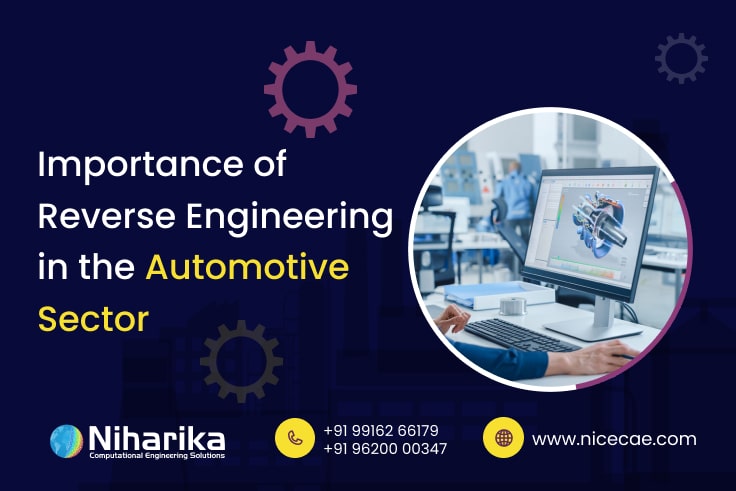In the last century, product manufacturers have created several products and machine parts. However, those parts are hardly relevant in contemporary times because technology is advancing at a rapid rate. However, from the perspective of the end-user, it is not always possible to continuously buy new products when it comes to expensive big machines. Generally, when a machine breaks down, the damaged part is replaced instead of the entire machine. On the other hand, if a new upgrade of a part has been launched in the market, it can be installed by replacing the older part so that it improves the functioning of the device.
That is why mechanical engineering design services are in high demand because they conduct reverse engineering, where the device is dismantled to find out how the machine works. Reverse engineering helps in gaining insight into the inner mechanisms of a device, which allows the designers and manufacturers to make a better product. Besides, you will be able to conduct a security analysis, gain a competitive advantage, repurpose an obsolete object, find out where things went wrong, or even teach someone how the machine works.
Reverse Engineering for Automotive Sector
Simply put, engineering is the source of every automobile product. As previously said, the origin of the rapid growth of creativity and invention is still a mystery. Reverse engineering is the solution to this problem, which is yet another example of backward growth. Industrial automobile components can be difficult to reverse engineer and analyse due to the complexity of the materials used and the necessity for accuracy when handling the image data.
In contemporary times, reverse engineering is actually considered the foundation for redesign, restructuring, and concept valuation in the automotive sector. It offers value when the design is required to be extracted from a discontinued or old design because it doesn’t have a 3D model for reference. Utilising reverse engineering services is primarily intended to produce a 3D model that closely resembles the original functional design of the model in terms of aesthetics, aerodynamics, and other factors. The most important factors are getting the data quickly and correctly using laser scanning and then using mechanical engineering design services to produce a flawless CAD file that would be free of the flaws in the original body.
Benefits of Reverse Engineering for the Automotive Sector
Reverse engineering has some distinct benefits, especially when it comes to the automotive industry. Check out the points given below.
Find Out How an Old Machine Functioned
When you want to know how an old vehicle worked, reverse engineering can be quite useful. Employing reverse engineering techniques is common in automobile companies to know how an old vehicle was designed or functioned. Apart from laser scanning, they also take reference to the old blueprint as well as other material data. It will show what materials, like metals or alloys, were utilised to make the machine and offer other information regarding the way it functions.
In particular, it is critical to acquire precise fixation locations for complex systems. Additionally, all the aesthetic components, such as body kits, must be considered in order to get that antique indigenous appearance. It is necessary to ascertain even the original assembly characteristics. Last but not least, the mechanical design specialists may offer advice on the heat treatment procedure, how to set up working procedures, etc. Therefore, via reverse engineering, it is feasible to gain a thorough understanding of how old-model automobiles function and to build a copy that not only looks the same as the original but may perhaps perform even better.
Discover New Things
It goes without saying that advancements in technology are happening at a very fast rate. For instance, automatic cars were only a figment of imagination a few years ago. Now we have Tesla, where you don’t need a driver to run your car. Exploring current designs in-depth and often will allow for this evolution. It is possible to obtain feedback and information by examining the present design, which may then be used to provide ideas and modifications for better and more usable parts, components, and products. Reverse engineering increases the potential for customisation and quick expansion by delving deeply into the organisation and implementation of concepts underlying each component of an entity or its portion.
Getting Rid of Weak Components
Components facing problems after the vehicles have been launched in the market are a common fact. In several cases, it is not easy to detect the reason behind a performance failure. In that case, using reverse engineering can help get to the root of the problem. Each component and portion will be able to be examined independently in order to determine what went wrong and where. Similar to this, it is conceivable for some parts and components to become outdated due to shifting market and environmental requirements. It is possible to gain the upgrade version and the requisite understanding of current standards by applying reverse engineering to a particular car element. It promotes operational effectiveness and guarantees that issues encountered in the past are successfully resolved.
Apart from the points mentioned above, reverse engineering also helps competitors know how the latest vehicle functions. So that they can find out their limitations and create something better than their competitor. Overall, it is quite clear that reverse engineering offers a lot of advantages in the automotive industry, and its demand will keep increasing with time.


.jpg)
 (1).jpg)
 (1).jpg)
 (1).jpg)
 (1).jpg)
.jpg)
(1).jpg)
(1).jpg)
.jpg)
.jpg)
.jpg)



.jpg)



.jpg)



.jpg)